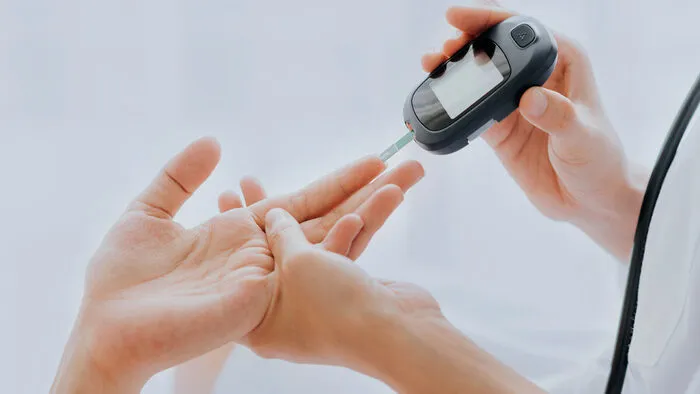Diabetic neuropathy is a type of nerve damage that can occur in people with diabetes. If you have high levels of glucose in your blood, the covering of your nerves and blood vessels can become damaged. Neuropathy can affect any nerve in the body, but it most often affects the ganglia, spinal cord, heart, bladder, intestines, abdominal nerves, and nerves that control important organs.
Different types of nerve damage can cause a range of symptoms, including pain and numbness in the legs, problems with internal organ function, such as the heart and bladder. Diabetic neuropathy is a common and serious complication of diabetes, but it can be prevented or its progression slowed with good blood sugar control and a healthy lifestyle.
Types of Diabetic Neuropathy
There are four main types of diabetic neuropathy: peripheral neuropathy (affects the feet and hands), autonomic neuropathy (affects the nerves that control involuntary functions), focal neuropathy (involves damage to a single nerve), and proximal neuropathy (rare nerve damage in the hip or thigh).
Symptoms of Diabetic Neuropathy
The symptoms of diabetic neuropathy depend on the type and nerves affected and typically develop gradually. Examples of symptoms include heartburn and swelling, nausea, constipation or diarrhea, difficulty speaking or swallowing, bladder problems, sexual problems, dysesthesia, drooping face and eyelids, muscle contractions, and weakness.
Symptoms of Peripheral Neuropathy
- Tingling
- Numbness of the limbs, which may be permanent
- Burning sensation, especially in the evening
- Pain
Symptoms of Proximal Neuropathy
This type of neuropathy causes pain, usually on one side, in the thighs and hips. It can also result in weakness in the legs.
Symptoms of Focal Neuropathy
- Double vision
- Eye pain
- Paralysis on one side of the face
- Severe pain in one area, such as the lower back and legs
- Chest or abdominal pain that is sometimes mistaken for a heart attack or appendicitis
Does diabetic neuropathy go away?
Diabetic neuropathy may or may not go away on its own. The signs and symptoms do not always indicate nerve damage, but they may be a sign of a more serious issue that requires medical attention. Contact a doctor if you experience:
- An infected cut or wound on the foot that is not healing
- Burning, tingling, weakness, or pain in the hands or feet that interferes with daily activities or sleep
- Any noticeable changes in digestion, urination, or sexual function
- Dizziness
Causes of Diabetic Neuropathy

Diabetic neuropathy may be triggered by high levels of glucose in the blood due to diabetes, and high levels of fats (such as triglycerides), which can damage nerves. The high levels of glucose in the blood can also damage small blood vessels that carry oxygen and nutrients to the nerves, leading to a lack of proper functioning of the nerves.
Causes of Nerve damage:
- Inflammation of the nerves due to an autoimmune response
- Some genetic factors not related to diabetes that may increase the risk of nerve damage
People with diabetes are more likely to experience nerve damage if they:
- Have uncontrolled blood sugar
- Have a history of diabetes
- Have kidney disease
- Are overweight
- Have high blood pressure
- Have high cholesterol
- Drink heavily
- Smoke cigarettes
Research also suggests that certain genes may increase a person’s likelihood of developing diabetic neuropathy
Prevention of Diabetic Neuropathy
To prevent diabetic neuropathy, it is important to manage diabetes by controlling blood glucose levels, blood pressure and cholesterol levels.
To prevent nerve damage related to diabetes, you should take the following steps:
- Follow the diet plan
- Quit smoking
- Reduce alcohol consumption
- Take medicines for diabetes and other problems as prescribed by the doctor
- Keep BP under control
- Eat healthy food
Diagnosis of Diabetic Neuropathy
- Filament test: In this test, the doctor brushes a soft nylon fiber (monofilament) across your skin to test your ability to feel touch.
- Quantitative sensory testing: This noninvasive test is used to find out how nerves respond to vibration and temperature changes.
- Autonomic tests: If the doctor suspects autonomic neuropathy, special tests may be done to see how your blood pressure stays in different situations, and whether you are sweating normally.
Other tests may include an ultrasound of the affected organs, and checking of blood pressure or heart rate variability.
If the doctor suspects diabetic neuropathy, he or she may order the patient to undergo some diagnostic tests, such as an electromyogram (EMG), which records the electrical activity in muscles, or a nerve conduction velocity test (NCV).
What is the best treatment for diabetic neuropathy?
There are three main methods for treating diabetic neuropathy:
Medications: Antidepressants can help control pain.
Physiotherapy: Physical therapy, when used in conjunction with medications, helps relieve pain and reduce drug dependence. Electrical nerve stimulation is painless and can help relieve stiffness and treat leg ulcers. Gait training involves learning to walk again, which helps prevent and stabilize foot complications, such as ulcers.
This is extremely important for people who have lost a limb due to diabetic neuropathy and use prostheses. Other treatments include devices to prevent painful limbs from being touched by a bed or chair and topical lotions or supplements that may provide relief.
Chiropractors, massage therapists, or osteopaths can perform regular massage or manual therapy to stretch muscles and prevent muscle contraction, vein engorgement, and atrophy caused by blood loss. Exercises such as swimming or aerobics maintain muscle strength and prevent muscle mass loss.
Alternative treatments: Capsaicin cream (made from chili), physical therapy, or acupuncture may provide pain relief and are often used with medications. Alpha lipoic acid and transcutaneous electrical nerve stimulation (TENS) can also block pain signals from reaching the brain. Acupuncture can relieve neuropathy pain, but it may require more than one session and does not provide immediate relief.
Complications of diabetic neuropathy:
Diabetic neuropathy has several complications to be aware of, such as foot problems (wounds, ulcers, infections), problems with balance and coordination leading to falls and fractures, urinary tract problems, loss of sense of touch in the feet, muscle damage, decrease in muscle mass, frequent nausea and vomiting, digestive problems, low blood pressure upon standing, sexual dysfunction, bladder disease, and kidney infections.

